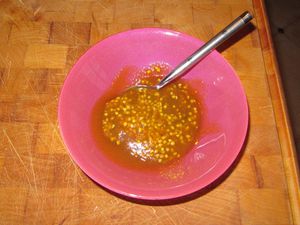

A 2010 study published in Pharmaceutical Biology found that honeybee pollen displayed significant anti-inflammatory activities when given to mice with acetaminophen-induced liver necrosis.Īnother study conducted in 2010 investigated the anti-inflammatory effect of bee pollen bulk, its water extract and its ethanol extract by a method of carrageenan-induced paw edema in rats. Researchers suggest that it can be used in acute and chronic inflammatory conditions, initial degenerative conditions, and liver disease or toxicity. The anti-inflammatory activity of bee pollen has been compared to drugs, such as naproxen, analgin, phenylbutazone and indomethacin. It’s used around the world for medicinal and therapeutic purposes. 0.1 percent fat-soluble vitamins (including vitamins A, E and D)Įating bee pollen has numerous health benefits, which are due to the range of antioxidants, amino acids and micronutrients found in the pollen.


0.6 percent water-soluble vitamins and acids (including B1, B2, B6 and C).1.6 percent minerals (including calcium, phosphorus, magnesium, sodium, potassium, iron, copper, zinc, manganese, silicon and selenium).2 percent phenolic compounds (including flavonoids).5 percent lipids (including essential fatty acids).23 percent protein (including 10 percent of essential amino acids).26 percent sugars (mainly fructose and glucose).Bee pollen nutrition facts are as follows: The benefits of bee pollen come from the substance’s impressive nutrition content.
BEE POLLEN CALORIES HOW TO
Related: Honey Water Benefits + How to Make It Nutrition Facts The pollen grains depend on the plant species they differ in shape, color, size and weight.īee pollen is known as an apitherapeutic product because it contains groups of chemical compounds that are made by bees and used for medicinal purposes. In its composition, there are about 250 substances, including amino acids, lipids, vitamins, macro- and micronutrients, and flavonoids. Bees usually collect pollen from the same plant, but they sometimes collect pollen from many different plant species. The color of the pollen varies, ranging from bright yellow to black. The bees must force their way through the traps to get into the hive, and they lose part of the pollen basket, sending them back out to collect more pollen. There are special devices, or pollen traps, that are used to collect pollen baskets as field bees return to their hives. Each day, the amount of pollen collected from one colony amounts to 50–250 grams. The bee bread serves as the basic protein source for the bee colony.Īccording to the latest national data, one bee colony gives one to seven kilograms of pollen a year. Then the surface of the collected pollen is covered with a thin layer of honey and wax, creating “bee bread.” Research shows that the bee bread undergoes anaerobic fermentation and is preserved by the arising lactic acid. What Is Bee Pollen?īees collect pollen from plant anthers, mix it with a small dose of the secretion from salivary glands or nectar, and place it in specific baskets (called corbiculae) that are situated on the tibia of their hind legs - called pollen loads.Īfter the pollen is collected, it’s brought to the hive where it’s packed in honeycomb cells. In fact, bee pollen contains more protein than any animal source and more amino acids than equal weight of eggs or beef … and those are just some of the top bee pollen benefits. It’s rich in vitamins, minerals, proteins, lipids and fatty acids, enzymes, carotenoids and bioflavonoids - making it an antibacterial, antifungal and antiviral agent that strengthens the capillaries, reduces inflammation, stimulates the immune system and lowers cholesterol levels naturally. Did you know that bee pollen contains almost all of the nutrients required by the human body to thrive? That’s why the German Federal Board of Health has officially recognized it as a medicine.īee pollen is wonderful for natural allergy relief and is responsible for the many health benefits of raw honey.


 0 kommentar(er)
0 kommentar(er)
